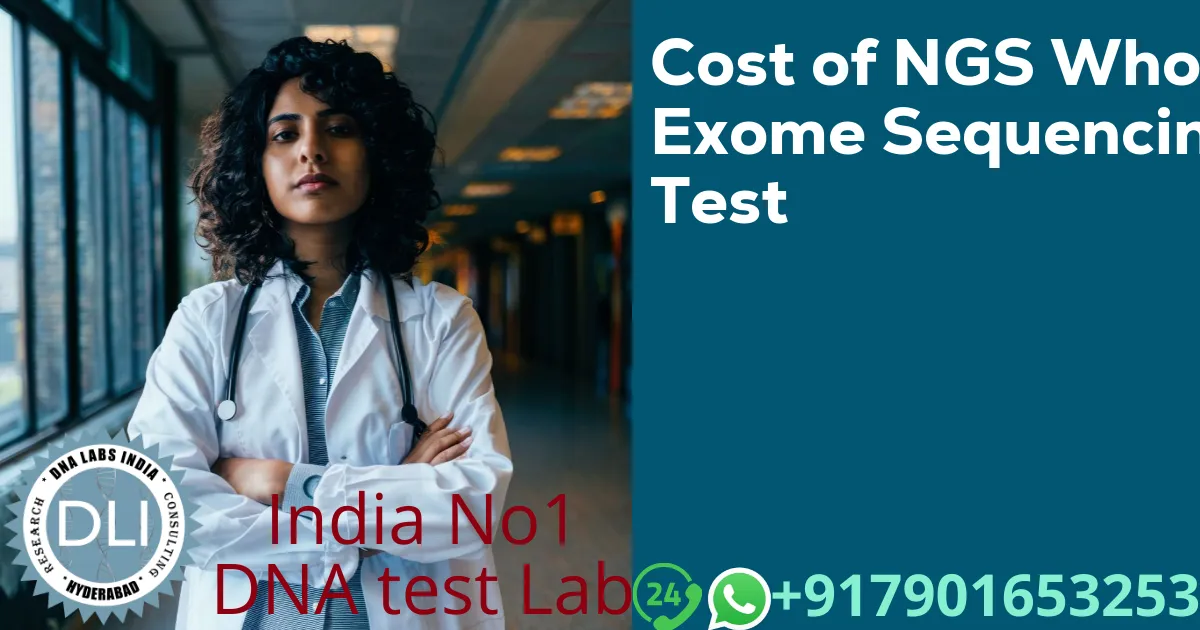Whole Exome Sequencing (WES) is revolutionizing how genetic disorders are diagnosed and understood. If you or your child has a complex or unexplained medical condition, WES could provide the answers you’ve been looking for.
In this blog, you’ll learn:
- What WES is and how it works
- Who should consider the test
- The benefits, cost, and how to book it in India
- What to expect from the report
Quick Overview of WES
| Feature | Details |
|---|---|
| Test Name | Whole Exome Sequencing (WES) |
| Technology | Next-Generation Sequencing (NGS) |
| Coverage | All coding regions (exons) of the genome |
| Cost | ₹24,000 |
| Report Delivery Time | 4–5 weeks |
| Sample Collection | Free home sample collection across India |
| Ideal For | Unexplained symptoms, suspected genetic disorders, rare diseases |
What is Whole Exome Sequencing?
Whole Exome Sequencing (WES) is a genetic test that analyzes all the protein-coding regions of a person’s DNA — known as the exome. While the exome makes up only about 1–2% of the human genome, it contains 85% of known disease-causing mutations.
WES helps identify mutations that are responsible for rare genetic disorders, developmental delays, and other complex conditions by sequencing these exonic regions using Next-Generation Sequencing (NGS).
How Does Whole Exome Sequencing Work?
Here’s a simplified step-by-step process:
- DNA Extraction
A sample of your (or your child’s) DNA is collected via a simple blood or saliva sample. - Library Preparation
The DNA is broken into fragments, and exons are targeted using special probes. - NGS Sequencing
The selected exons are sequenced using advanced NGS platforms. - Data Analysis
The patient’s sequence is compared to a reference genome to identify differences. - Report Generation
Experts analyze the data and prepare a detailed clinical report, highlighting relevant genetic variants.
Who Should Get WES?
Whole Exome Sequencing is recommended if:
- A genetic condition is suspected but not yet diagnosed
- The patient has a complex medical history involving multiple organs or symptoms
- Previous genetic tests were inconclusive
- There is a family history of genetic disorders
- You’re planning to have children and want genetic screening
WES can be done in prenatal, pediatric, or adult cases.
Benefits of Whole Exome Sequencing
- ✔️ High diagnostic yield (25–50%)
- ✔️ Covers all genes known to cause human disease
- ✔️ More cost-effective than full genome sequencing
- ✔️ Can guide targeted treatment plans
- ✔️ Helps assess risk for family members
- ✔️ Supports informed family planning decisions
What is the Cost of Whole Exome Sequencing in India?
- Price: ₹24,000
- Includes:
- Home sample collection (no extra charge)
- DNA extraction and NGS processing
- Expert data analysis and clinical report
- Optional secondary findings (if consented)
What’s Included in the WES Report?
- ✅ Primary Findings: Disease-related genetic variants relevant to your or your child’s condition.
- ✅ Secondary Findings (optional): Other clinically significant mutations that may impact long-term health.
- ✅ Variants of Uncertain Significance (VUS): Mutations with unknown or unclear clinical effects.
- ✅ Family Testing Guidance: Information to help test relatives if a genetic variant is found.
- ✅ 📁 Raw Data Provided: You will receive the raw FASTQ/VCF/BAM data files upon request for future use, research, or second opinions.
📌 Note: Raw data can be large (in GBs) and is usually shared via a secure cloud link or external storage.
WES vs. Other Genetic Tests
| Test Type | Genome Coverage | Best For |
|---|---|---|
| Whole Exome Sequencing | ~2% (All exons) | Complex, undiagnosed conditions |
| Whole Genome Sequencing | 100% | Ultra-rare diseases, research use |
| Targeted Gene Panels | 10–200 genes | Known disease groups (e.g. cancer, epilepsy) |
| Microarray / Karyotyping | Chromosomal level | Large deletions/duplications |
How to Book the Whole Exome Sequencing Test
Booking your WES test is easy and convenient:
- Online Booking
Visit our website and fill out the booking form. - Phone Booking
Call us directly to schedule your test. - Sample Collection
A trained technician will collect your sample from home at no additional charge.
💬 Have questions before booking? Contact our genetic counselling team for free pre-test guidance.
Frequently Asked Questions (FAQ)
Is WES better than normal genetic testing?
Yes. Traditional tests target 1–10 genes, while WES analyzes over 20,000 coding genes, increasing the chance of finding a diagnosis.
Can I use WES for family planning?
Absolutely. It can detect inherited conditions and help assess risks for future children.
Will my insurance cover the cost?
Coverage depends on your provider. Please check with your insurance company directly.
Can WES be done during pregnancy?
Yes, prenatal exome sequencing can help diagnose fetal anomalies, usually in high-risk pregnancies.
What if no mutation is found?
A negative result doesn’t rule out a genetic cause. Additional tests or updates may be considered later as research evolves.
Final Thoughts
Whole Exome Sequencing (WES) is a game-changer for diagnosing unexplained medical conditions. At just ₹24,000, with free home sample collection and expert clinical support, WES is now more accessible than ever in India.
If you’re struggling to get a diagnosis — or want to take proactive control of your genetic health — this is the test that could make all the difference.
📞 Call now or book online to schedule your WES test. Your DNA holds the answers — we’re here to help you find them.



